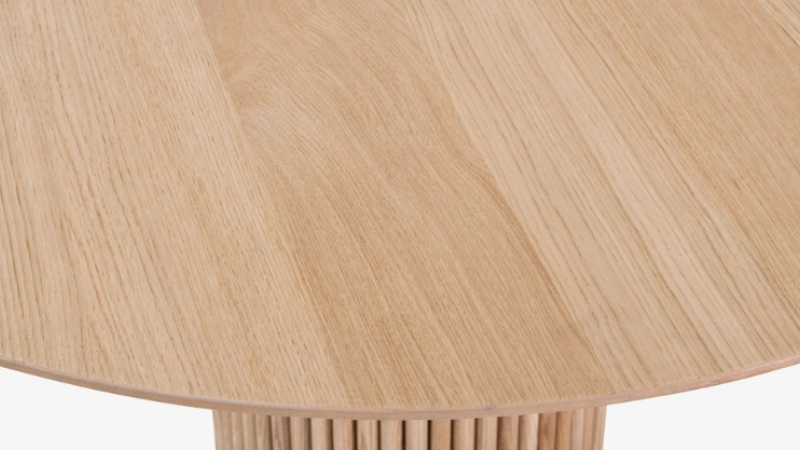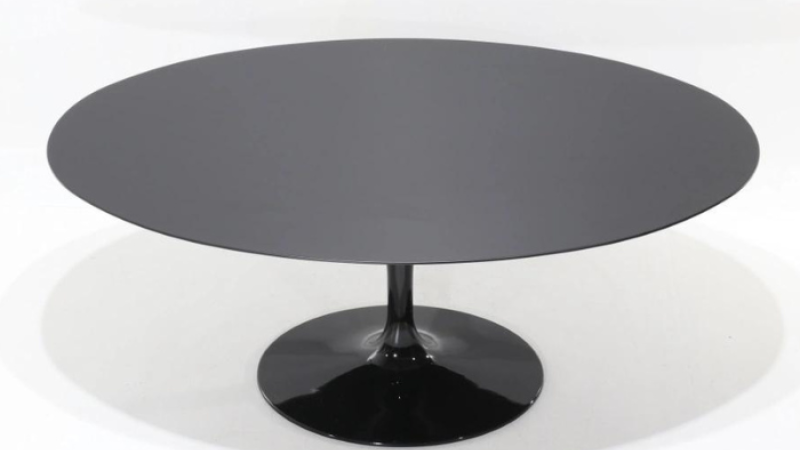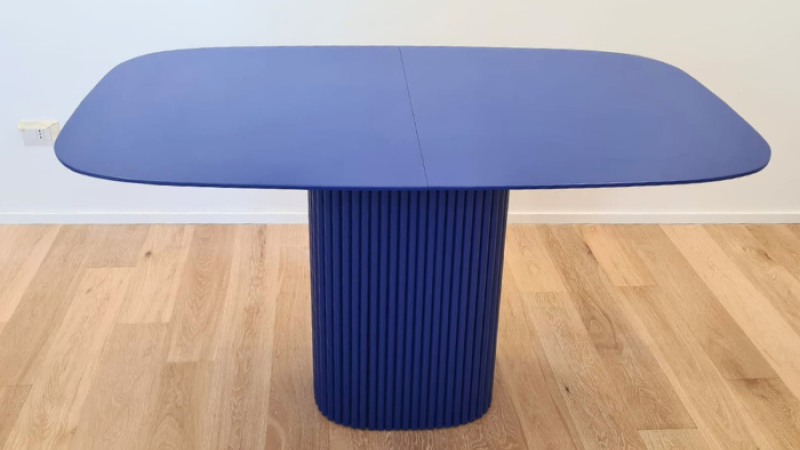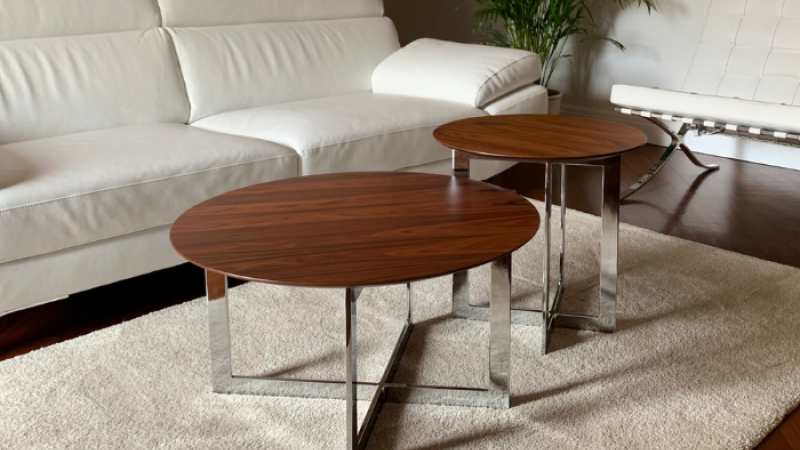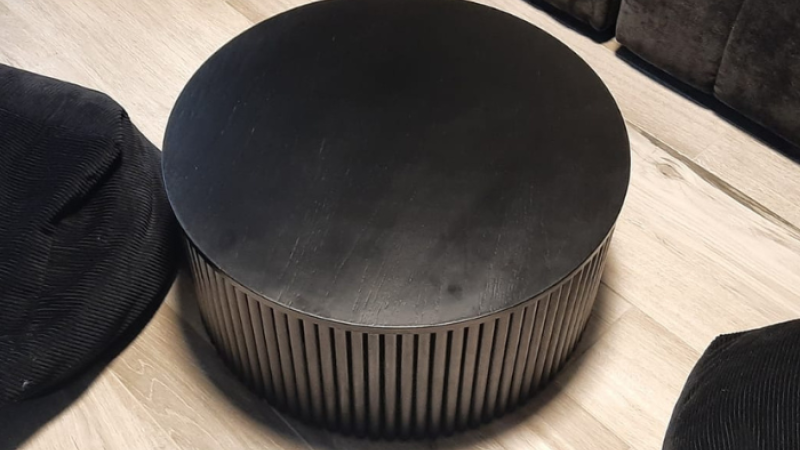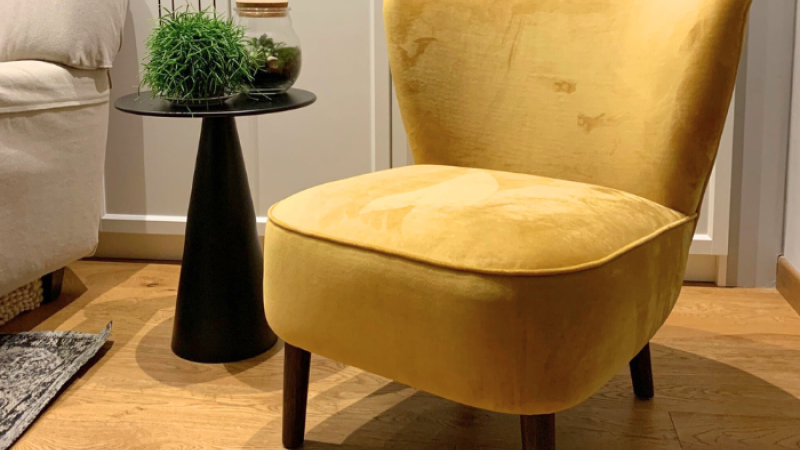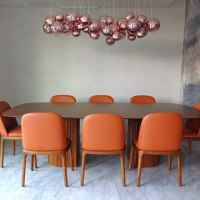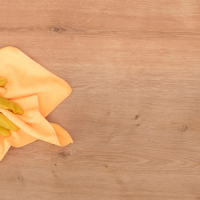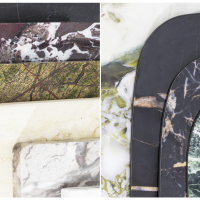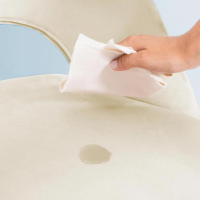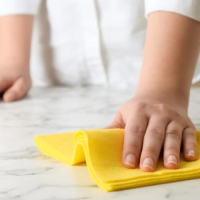What is the difference between veneered wood and liquid laminate?
From natural appearance to versatility: a complete guide to the choice of veneered wood furniture or liquid laminate.
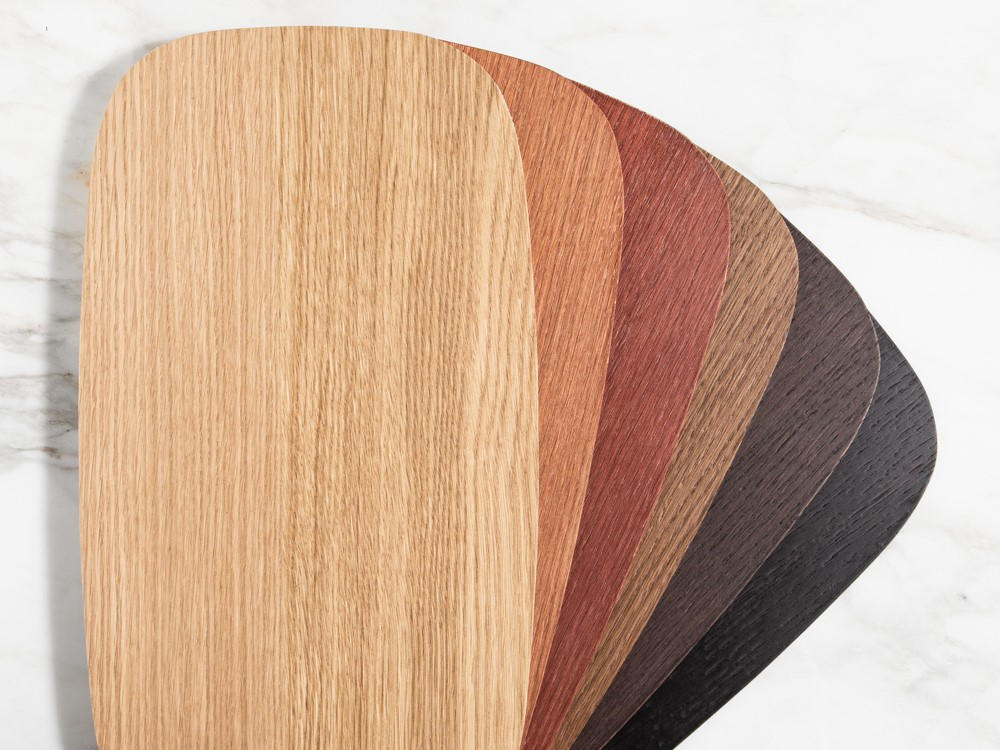
Are you looking for the perfect table for your kitchen or dining room, but do not know what material is right for you?
You must have come across wood veneer or laminate tables and probably wondered which of the 2 alternatives is more advantageous. Let’s see together the differences, comparing them in terms of elegance, versatility, maintenance, durability and price.
What are veneered wood and liquid laminate?
- Veneered wood is a non-precious wood, in our case MDF wood, which is covered with 2 layers of high quality wood, such as oak or walnut. He thinks that this technique is very old, having been born during the Renaissance.
- The liquid laminate, on the other hand, is always made of MDF wood, but is then covered with a decorative non-precious sheet that can be lacquered in any RAL color and an additional transparent protective layer to increase its strength.
Let’s analyze the main characteristics and differences:
1. Elegance
Veneered wood in kitchen or dining tables offers unparalleled elegance and refinement, which laminate often fails to achieve. Thanks to its visible veins, its surface is pleasantly tactile and can present small variations of color, which thus give a touch of exclusivity and originality, creating a cozy and sophisticated environment.
2. Versatility
A strong point of the liquid laminate table is definitely its versatility: made by applying a decorative layer to MDF wood, this procedure allows you to choose from a wide range of colors. With IBFOR you can make your table in any RAL color!
Oak veneered wood, on the other hand, can be white or black lacquered and in all the essences of oak (natural oak, bleached, wenge-stained, dark wenge-stained, walnut-stained, cherry-stained or mahogany-stained), thus offering a more limited choice.
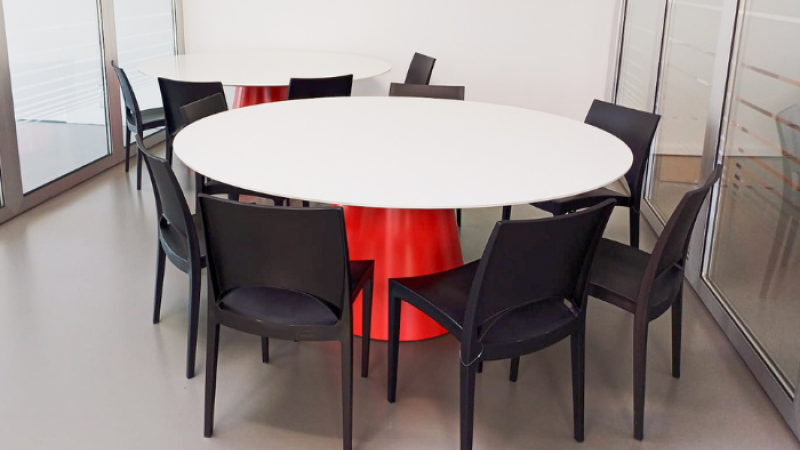
Beatrice table in liquid laminate with white top and red lacquered base
3. Maintenance and cleaning
Both laminate tables and veneered tables are easy to clean and do not require difficult maintenance. However, there is a small difference between the 2 that is worth pointing out: the veneered table, being more porous, could more easily absorb any liquids and dirt in general and therefore, in case of pouring water, beer, wine, etc. or in the presence of any other stain, it is advisable to remedy promptly, dabbing the surface with a microfiber cloth, so as to avoid infiltration.
4. Duration over time
There is no particular difference in the duration of the 2 tables: both are durable and durable. This feature depends on the quality of the materials and processes: at IBFOR you do not have to think about the longevity of your table, QUALITY is one of the keywords of our company!
5. Price
Veneered wood is more expensive to produce than laminate, which is reflected in the price of the finished table. The price of the veneered table will vary not only depending on the size and shape of the top and the table model chosen, but also on the basis of the wood that is used. At IBFOR we mainly use oak, but there are also more valuable woods such as walnut or even rosewood.
We would have finished our explanation here, but not before mentioning the coffee tables, of which you had a spoiler right on top.
Do not forget that the wooden top is also widely used in the coffee tables: wood, in addition to adding a distinctive design element, also gives warmth and warmth to your environment.
To conclude, we summarize all the features listed in "pros" and "cons" that might help you in your final choice.
Pros and cons of liquid laminate
- PRO
1. Versatility in colors: The laminate can be lacquered in all RAL colors, offering a wide range of options to suit different aesthetic and design preferences.
2. Stain resistance and ease of cleaning: Its resistant surface makes the laminate less susceptible to stains and easy to clean, requiring minimal maintenance over time.
3. Durability: Laminate is known for its durability, it offers a robust surface that can withstand daily wear.
4. Moisture resistance: Many variants of liquid laminate are resistant to moisture, making them suitable for environments such as kitchens and bathrooms.
- CONS
1. Less natural appearance than wood: Unlike natural wood, laminate could be perceived as less warm and less inviting in terms of appearance and tactile feel.
2. High temperature sensitivity: Liquid laminate can also be sensitive to high temperatures and may be damaged if it comes into contact with extremely hot objects.
3. It is not as valuable as veneered wood: Compared to veneered wood, laminate may lack the same feeling of value and authenticity, especially in environments that require a touch of elegance.
Pros and cons of veneered wood
- PRO
1. Aesthetics: Veneered wood gives the environment a natural and warm look like solid wood.
2. Cost: It is often cheaper than solid wood, offering a similar result at a lower cost.
3. Dimensional stability: Veneered wood is less susceptible to deformation or cracking than solid wood due to its laminated structure.
4. Variety: It is available in a wide range of wood species and design, allowing greater flexibility in choosing the desired look.
- CONS
1. Finishing limitations: Due to the thin layer of veneer, finishing options, such as sanding or painting, may be limited.
2. Heat sensitivity: Veneered wood may be heat sensitive and may be damaged, such as deformation or indentation, when exposed to high temperatures. We therefore recommend not to place hot objects, such as pots or cups, directly on the wooden furniture.
You have come this far and you have chosen, for example, to opt for veneer, but you do not know if your favorite model of IBFOR table can have oak wood top?
I’ll tell you a secret: everything is customizable by IBFOR and consequently, all the tables on our website can have the oak top... and also in the extendable version!
Practical tips for the cleaning and care of wooden furniture
How to maintain wooden furniture over time
What is the difference between marble and marble-effect ceramics?
A detailed comparison between the intrinsic qualities of marble and its reinterpretation in ceramics.
How to clean velvet armchairs: practical tips and mistakes to avoid
In this article we explore the best methods to clean velvet effectively and the mistakes to avoid in order not to damage it.
It is precisely for this reason that over the years it has become the fabric par excellence for covering Ibfor chairs, ...

